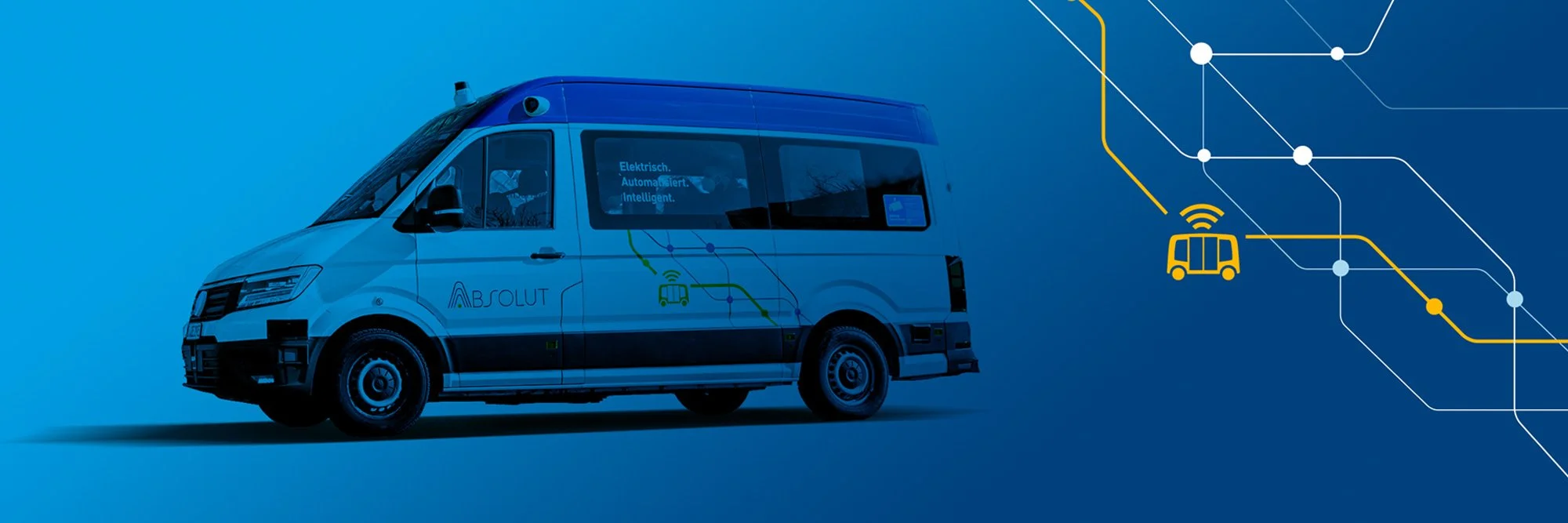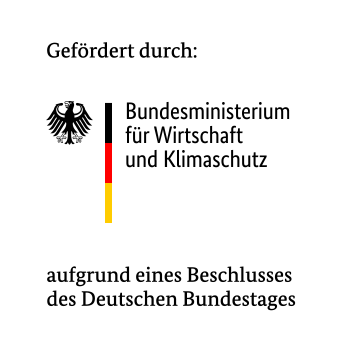
Automated Bus Shuttle in Leipzig
ABSOLUT – Automated Bus Shuttle in Leipzig
The ABSOLUT project aims to develop a self-organizing bus shuttle between the Leipzig Exhibition Area and the BMW main gate, which advances innovative approaches to automated driving in public transportation.
Innovations for Automated Public Transportation
Within the framework of the ABSOLUT project, a highly automated, demand-driven public transportation solution was designed and tested. The overall system encompassed all components of the value chain, from booking and information apps to a control center with deployment planning and pooling, to self-driving shuttles. The technology demonstration took place on a specially prepared test track, with safety drivers in the bus securing the driving functions. The ABSOLUT project focused specifically on the development of a self-organizing bus shuttle between the Leipzig Exhibition Area and the BMW plant. Here, innovative approaches to automated driving in public transportation were advanced, comparable to the ADAM project for autonomous flight navigation. The emphasis was on integrating automated driving technologies in urban and suburban traffic areas.
Development of a Comprehensive Concept for Automated Shuttle Traffic
Expanding the existing test field was another component of the project, alongside vehicle development. Comprehensive improvements were made to test the functionalities of the automated shuttle in various scenarios. Vehicle development focused on an advanced automated shuttle equipped with special sensors. This ensures safe maneuvers and recognition of differently equipped vehicles. By digitally mapping the urban and suburban traffic environment, precise data is collected. These serve as the basis for the development and integration of automated driving functions, enabling safe navigation in public transportation. The created georeferenced 3D maps contain necessary information for automated bus navigation and serve as planning for optimal route planning. The impressive demonstration of autonomous bus trips illustrated all essential aspects of the project. This underscores the performance of the developed technologies and marks an important milestone in the progressive automation of public transportation.
Positive Impacts on Automated Public Transportation
The use of the developed technologies in ABSOLUT will accelerate the deployment of automated buses, make approval for operation more predictable, and lay the foundation for future services in the field of automated public transportation. ABSOLUT thus supports the progressive development of the urban transportation market and contributes to the establishment of innovative mobility solutions.
Focus Areas of Sedenius
Record und Replay System
The developed ROS-based Record and Replay System combines essential functions for capturing and utilizing test data. Software components were developed to accurately record and analyze data. The aggregated data is stored structured with precise timestamps. Synchronization with GNSS timestamps maintains temporal accuracy. Powerful software components enable convenient control of display configuration and visualization. Finally, the system allows playing back recorded data in open-loop operation for comprehensive analysis and demonstration.
Object Detection Analysis Methods
The developed object detection analysis method undergoes a structured process to ensure essential functions for precise data capture and effective use. Convolutional Neural Network-based detection and classification of objects were developed with a clear focus on the performance and quality of the detected, classified objects.
Sensor Data Fusion
In the first preprocessing step, the processing of the different detection results into a unified, structured object format takes place. Subsequently, sensor data synchronization is performed to achieve a unified reference system both spatially and temporally. Data plausibility is a critical step, answering the question of which sensor delivers which results with what quality under which scenarios. Data fusion into a final data object was carried out considering requirements, rules, data formats, and specifications. The entire data fusion processing chain was evaluated on suitable datasets.
Local Dynamic Map – Environment Model
The LDM provided a structured machine-processed representation of a local environmental map with precise positioning and orientation of the detected objects. The visualization of the LDM includes displaying available map information as well as plotting the fused detection objects. Regions of interest (ROIs) and confidences are considered here. Defined areas as well as safety-relevant information are displayed to provide supportive data for decision-making to the safety driver.
Validation of AD Functions
The creation and variation of scenarios form the beginning, with functional as well as logical and concrete scenarios developed for worst-case analysis. Simulation and virtualization were carried out, among other methods, by using virtual data. The validation process was partially automated to ensure efficient execution. After the simulations, a meaningful report provides information on all relevant details of the (re-)simulation results.
Fact sheet
| Consortium leader | Leipziger Verkehrsbetriebe (LVB) GmbH |
| Funding | Bundesministerium für Wirtschaft und Energie (BMWi), Strategisches Einzelprojekt „IKT für Elektromobilität III“ |
| Term | 01.01.2019 – 31.12.2021 (Extension until 30.11.2022) |
| Budget | Total volume ca. 15 Mio. € |
| Project partner | In the ABSOLUT consortium of industry, local authorities and research, the Leipzig partners EASY ApiOmat GmbH, BitCtrl Systems GmbH, glts-cotech GmbH, Leipziger Verkehrsbetriebe (LVB) GmbH, the City of Leipzig’s Transport and Civil Engineering Office and Virtence GmbH worked closely with other partners from Saxony, such as Dresden University of Technology, IAV GmbH, FSD Fahrzeugsystemdaten GmbH and INAVET GmbH. The associated partners Leipziger Messe GmbH and BMW Group Werk Leipzig supported the project from a user perspective. |
